NOTES BY NORSE: The kind of photographic and journalistic documentation of Santa Cruz’s calculated cruel crackdown on homeless camps is much needed—-and we can learn much from Fresno–where homeless activists have pressed successful lawsuits, provided the trash and waste disposal that the city refuses to provide to existing homeless encampments, and publicized abuses so regularly that the City is forced to respond with the kind of caution (though not really care) that is entirely foreign to Santa Cruz sweeps.
Still no word from Councilmember Posner on the $15,000 bill for a lone portapotty being set up “as an experiment” near the San Lorenzo River at night (the only 24-hour shitter in town apparently). As I continually insist, the money could be far more effectively spent on opening existing bathrooms in San Lorenzo Park and at the Soquel and Front St. parking structure. What say you, Posner?
No word either from City Attorney Barisone on the right of artists to put sales tags (i.e. visible prices) on their work on Pacific Ave. even though the clear White vs. City of Sparks decision forced Barisone to allow Rightsfinder Robin to do just that several years ago. (For the decision go to
www.huffsantacruz.org and look under “Recent Legal Decisions” on the main page.
HUFF meets tomorrow (9-4) at 10 AM at the Sub Rosa if folks wish to discuss and act on these issues.
The City of Fresno Declares War on the Poor
By Jessie Speer

The author, Jessie Speer (center), with Ray Polk (left) and Larry Collins (right) at the H street homeless encampment, which the City of Fresno plans to bulldoze on Sept. 9.
Imagine a young woman. Close your eyes and see her in front of you—her hopeful gaze, her restless hands. Now imagine one morning she can’t get out of bed. The doctor says it’s brain chemistry, but her family can’t afford the treatment she needs.
There is no shelter space, so she ends up living in an encampment on the banks of a canal near downtown Fresno. One day the city announces it will bulldoze her tent, destroying everything she has.
This is not a nightmare. This is the real story of a young woman I met this summer while conducting interviews for a master’s thesis on Fresno homelessness with Syracuse University. Her name was Peaches, and she had freckles and curly hair. We sat outside her tent as she told me about her working-class upbringing, her bipolar disorder and her struggle with homelessness. (“Peaches” is a pseudonym, as the author protects the identity of all participants who wish to remain anonymous.)
Several weeks later, the city announced its plan to bulldoze three major tent cities in downtown Fresno. It will not provide residents with alternative shelter. When I asked Police Chief Jerry Dyer what will happen when the homeless resettle in other neighborhoods, he said the police will remove every camp in the city and continue doing so as long as necessary. I wondered what would happen to Peaches.
Fresno has the third highest rate of homelessness in the nation, and in 2011 it was the second most impoverished city. I came here to research how the local government was handling these high rates of homelessness and poverty. Over a two-month period, I interviewed more than two dozen politicians, shelter operators, community advocates and homeless people. I also attended community meetings and press conferences and read hundreds of pages of documents.
The more I learned, the more apparent it became that the city’s policy is to effectively drive the homeless out of Fresno. Politicians want to please business owners and see homelessness as a hindrance to downtown revitalization. Shelter operators claim that the homeless camps around their facilities have caused a decline in the use of services by other clients. In interviews, both groups consistently described all people without homes as criminal and deviant. The executive director of one of Fresno’s largest shelters told me that the homeless were “worse than infidels.”
I decided to write this article because I know firsthand that the homeless are not deviants. They are not separate and distinct from the rest of us. Like Peaches, the homeless are the mothers, fathers, grandmothers and cousins of the working poor in this community. Many homeless people work hard recycling or doing odd jobs all day long. Many people give away their last pair of clean socks to their neighbor or share their food with the community. And at no point during the hours I spent by myself at the camps did I feel threatened or unsafe.
At their latest press conference, city officials repeatedly referred to a recent string of violent crimes as the underlying reason behind the city’s new policy. Yet several insiders informed me that the plan to destroy the camps predated these crimes. And when I asked Chief Dyer how many of these violent crimes were committed by homeless people, he admitted only one perpetrator was homeless. Should more than 3,000 unsheltered citizens be driven out of the city because of the actions of one person?

The City of Fresno destroyed Yellow Feather’s shelter and confiscated her property. She now sleeps on the sidewalk near the Poverello House.
Imagine a massive flood hits north Fresno and hundreds of middle-class homes are destroyed. Of those affected, some don’t have anywhere to stay and begin living in tents to survive. Would you expect the community to come forward and help them, or should the community destroy their tents and drive them out of the city? I’m sure most Fresno politicians wouldn’t hesitate to help middle-class families get back on their feet. We would never think to blame middle-class flood victims for their tragic circumstances. But a pervasive and historic ideology says that poor people are somehow less deserving of kindness.
Aristotle wrote that wealth is a prerequisite for goodness. Milton Friedman, one of the fathers of American neoliberalism, argued that the poor are the losers of the capitalist system. In this way, poverty becomes justified, and society is no longer responsible.
But these luminaries forget that one’s lot is usually the luck of the draw, not a personal achievement. You are born with money, or you are born without it. And when you are born without money, you cannot afford disaster. Being laid off, missing a rent check, being arrested, getting sick, losing a loved one, surviving violence, getting hooked on drugs—every person I talked with who is living on the streets suffered from one or more of these problems.
The middle class and the wealthy have problems too. The difference is that their families will step in to pay for rent, quality healthcare, rehab or a lawyer. But for those already struggling with poverty, any blow can easily lead to homelessness. And once someone is living on the streets, it becomes harder and harder to bounce back, as physical health declines, depression sets in and drugs become a means of escape and self-medication.
As a society, we have several choices. We can help each other, we can do nothing or we can chase our poorest citizens out of town. For years, Fresno chose the second option and did nothing to house the majority of its homeless population who lived in sprawling downtown encampments. But when these camps began to receive negative press, the city started a campaign of destruction.
Over the course of a two-year period beginning in 2005, the city bulldozed at least 50 camps. During the raids, bulldozers came at odd hours and crushed all structures. Several residents lost their animals. On one occasion, a man crawled out of his tent moments after an activist prevented it from being bulldozed.
On another occasion, a Fresno police officer pushed a woman’s shopping cart into an irrigation canal of rushing water. The woman lived on a breathing machine due to severe asthma and had to attempt to replace her identification, birth certificate and medical records in order to requalify for disability.
The city destroyed another woman’s wheelchair, which left her sleeping outdoors without shelter or blankets. As a result, she slipped into a coma for two weeks. When city officials tried to destroy her tent on a second occasion, police threatened to Taser her husband if he intervened. The city’s policies resulted in hundreds of similar tragedies—tragedies that happened to real people, not the vague apparition Fresno politicians tend to dismiss as “the criminal homeless.”
In the wake of a lawsuit filed against the city in 2006, the sweeps slowed and tent city residents enjoyed a temporary reprieve. But the sweeps happened again in 2011, and again civil rights lawyers filed suit. Fresno officials I spoke with unanimously claimed that the lawsuits prevented them from doing anything about homelessness, when in fact the lawsuits only prevented them from unconstitutionally destroying people’s property.
As a corollary to this brutal and expensive policy, any attempts to create shelter options for the homeless have been seriously flawed and underfunded. In 2006, only 2% of the city’s homeless population was sheltered, and no new temporary shelters have been constructed since then. Currently, one of Fresno’s only emergency shelters is operating at less than 10% capacity because its executive director ousted anyone who uses a cellphone, who doesn’t pray and repent to Jesus on a daily basis, or who has any source of income. As one homeless man told me, this shelter is “worse than prison.” And many Fresno shelters have similarly draconian rules.
Meanwhile, attempts at securing permanent housing for the homeless in Fresno have been plagued by corruption. In 2010, when the city received an $11 million federal grant for permanent housing for the homeless, the money was given to a private developer to construct a small housing facility. The chair of the board that allocated the money also happened to be the CEO of the company that constructed the building. This facility now stands as the exemplary model for future housing for the homeless.
Thus, homelessness has become an industry in which various developers, shelters and service providers vie for government money. These problems can and should be addressed. But the city is so focused on driving the homeless out of town that the time and resources needed to do so are sorely lacking.
During my time here, I faced the real, everyday humanity of the people who are living on the streets of Fresno, and I can no longer remain impartial to the city’s policies. The way Fresno handles homelessness is not only rooted in an inhumane ideology, it is also irrational. This city has tried this tactic before in 2005 and 2011, and in both instances it failed. Homelessness is still a persistent problem. It’s time for a new tactic.
*****
Jessie Speer is pursuing a master’s degree in geography at Syracuse University. Contact her at jlspeer@syr.edu.

Rev. Dr. Chris Breedlove of College Community Congregational spoke at the press conference organized by homeless advocates
Coalition Organized in Opposition to Razing of Homeless Encampments
By Community Alliance Staff
About 30 members and supporters of the Fresno Coalition for Humane and Affordable Housing Policies held a press conference on Aug. 26 on the corner of Santa Clara and G streets to announce their opposition to the city’s planned demolition and to launch a petition drive asking the city to halt the razing of the camps and address the issue of homelessness in a humane and effective manner. The Coalition’s petition has been uploaded to a Web site created by the group at www.helpfresnoshomeless.org/.
“Our group believes that demolishing homeless encampments is inhumane,” said Coalition member Mary Ellen Carter at the press conference. “The city’s plan to offer alternative housing to the people who live in the encampments is woefully inadequate.
“Few people in the encampments will be able to receive housing vouchers before the scheduled demolitions. The city’s plan is not a long-term plan at all; its lack of compassion is disturbing, and it is a public shame to our city. We can do better than this.”
The city’s first day of the demolition went ahead as scheduled. Crews bagged and boxed homeless people’s property, taking it to a storage location where they say it will be available for retrieval for the next 90 days. Then the bulldozers moved in destroying couches, shelters and anything else left behind. Although the city workers store tents, they plowed through wooden shelters and put the remains into the back of waiting garbage trucks.
Later in the day, I talked to Yellow Feather a homeless woman who lived on F Street near Ventura, who was upset because the receipt she received for her property did not tell her where it was stored and it was issued by the Solid Waste department of the City of Fresno. Yellow Feather objected to her property being taken by Solid Waste, saying “my belongings are not garbage. And why can’t they tell me where my property is located at?”
A group of homeless men who attempted to get away from the demolition of their shelters were stopped on the other side of the street by Caltrans workers who told them they could not bring their shopping carts onto Caltrans land. In a minute, they were joined by a California Highway Patrol officer who provided additional urgency to the Caltrans workers’ demand to leave their vacant lot.
The homeless have no place to sleep that is safe and legal. Although city representatives are telling them that they will not stop them from sleeping on the sidewalk at night, some women like Yellow Feather wonder out loud how this new city policy is supposed to help them.
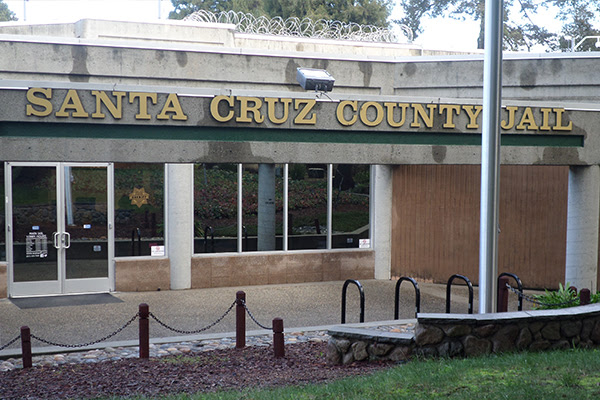
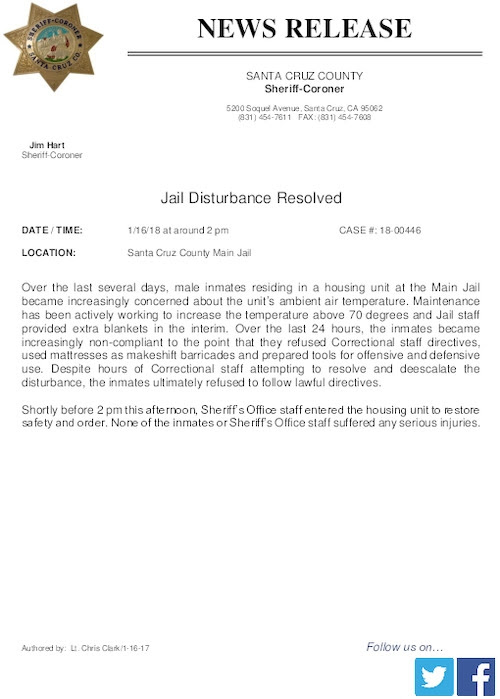










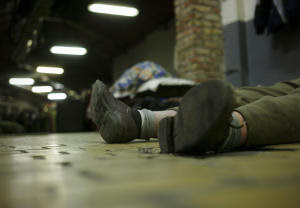

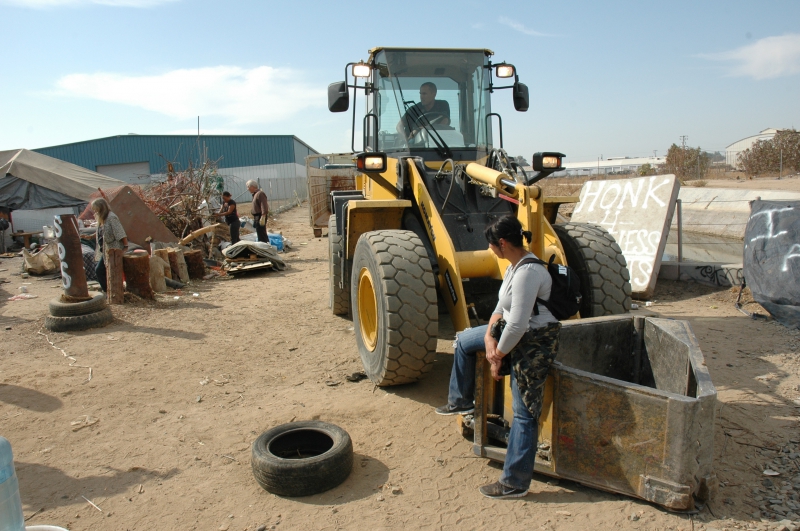
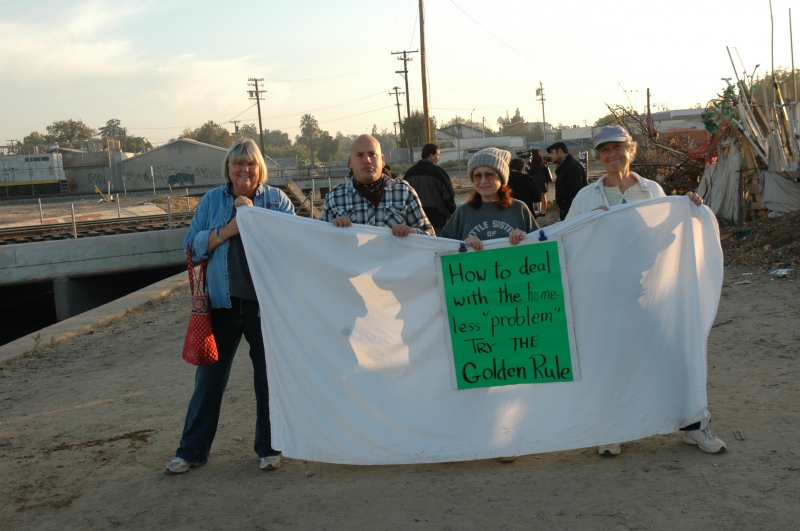
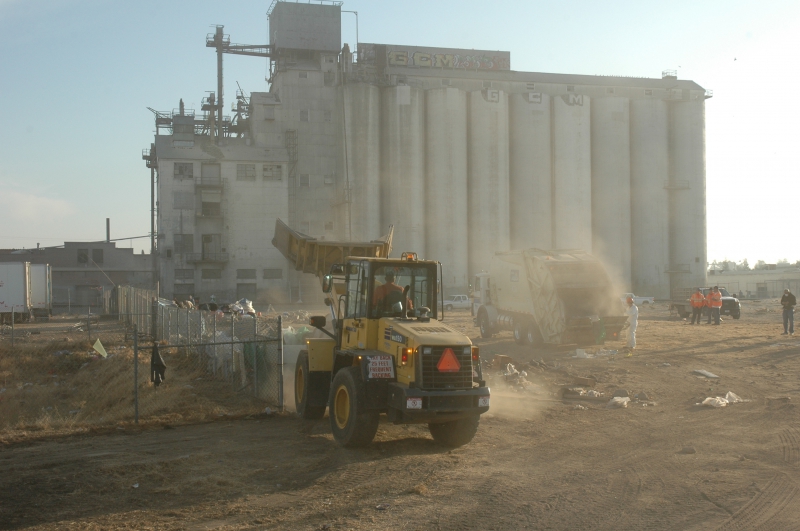

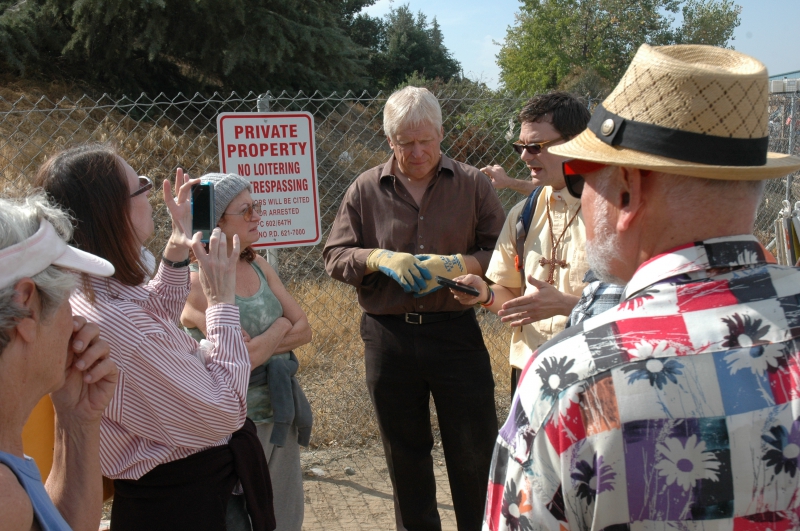
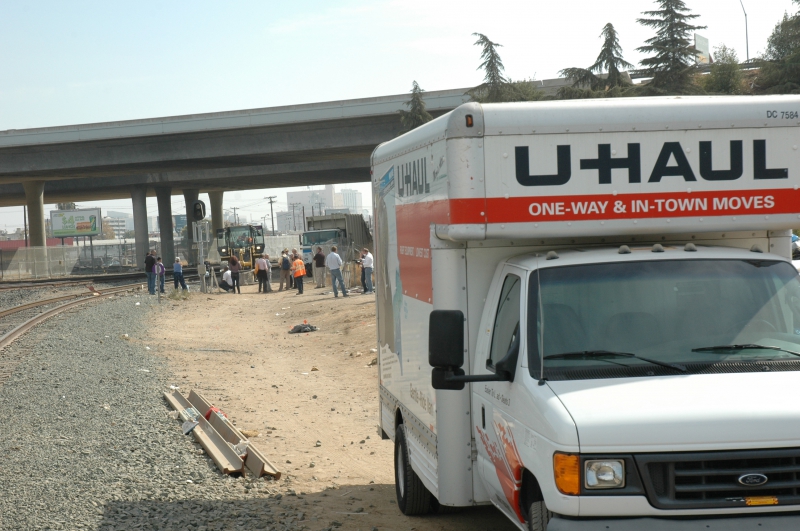
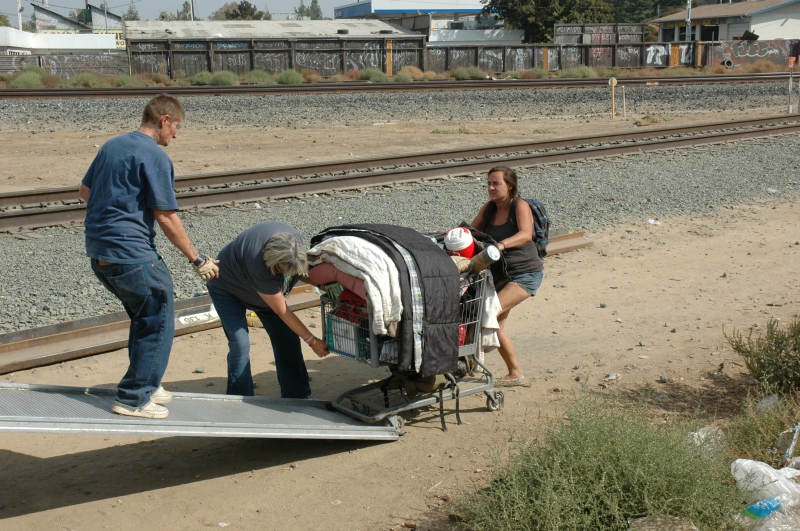
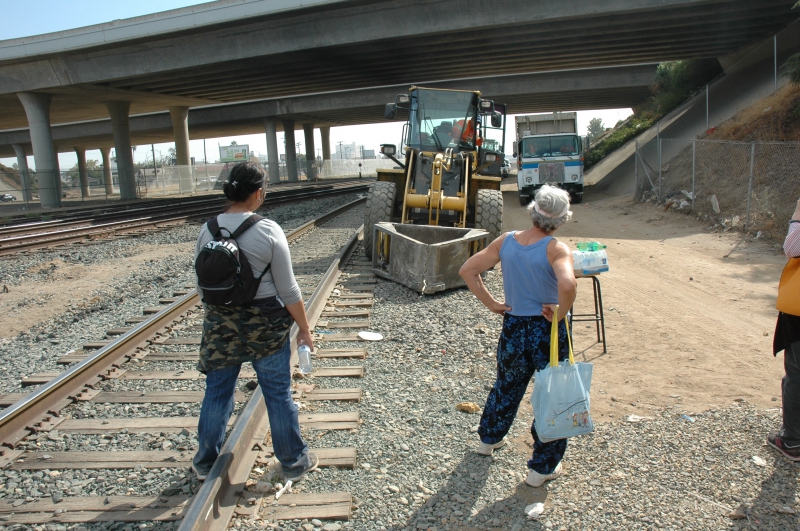
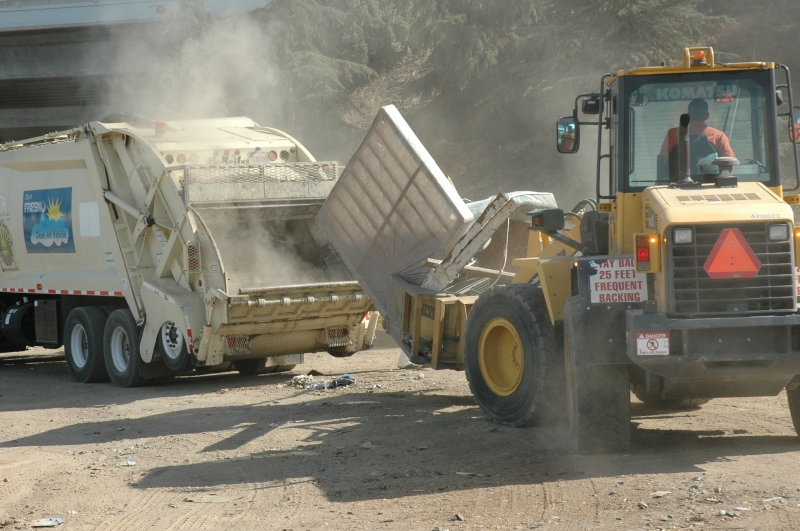
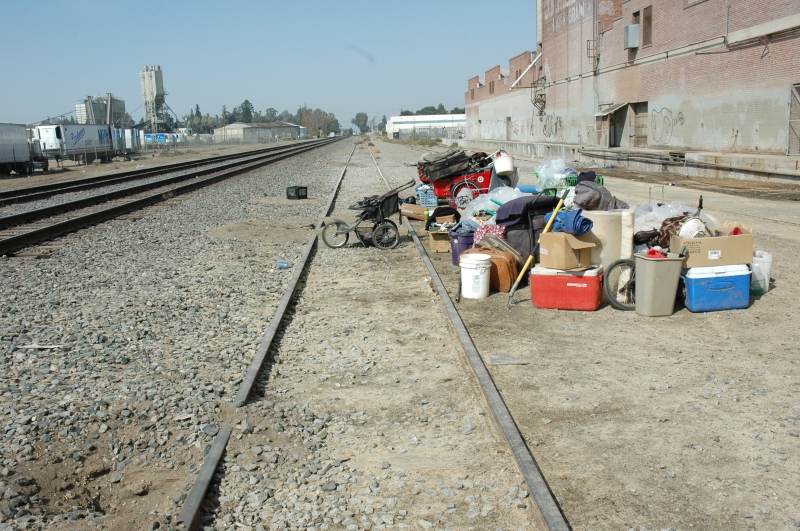
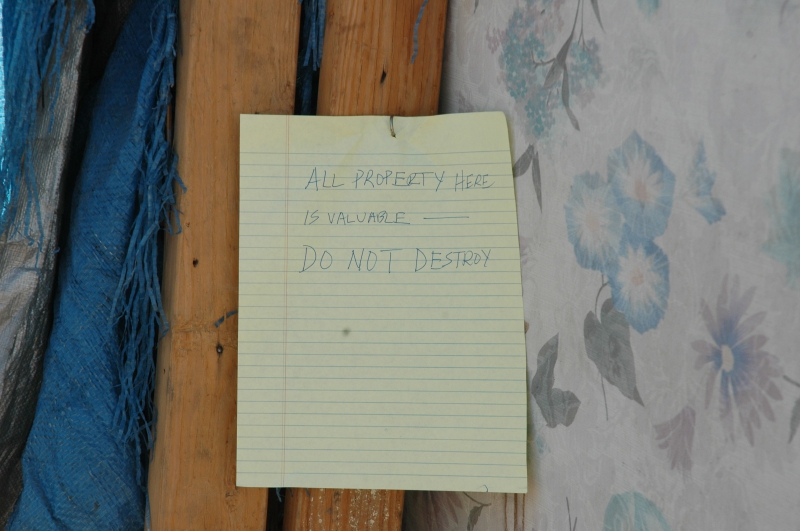

 The author, Jessie Speer (center), with Ray Polk (left) and Larry Collins (right) at the H street homeless encampment, which the City of Fresno plans to bulldoze on Sept. 9.
The author, Jessie Speer (center), with Ray Polk (left) and Larry Collins (right) at the H street homeless encampment, which the City of Fresno plans to bulldoze on Sept. 9.
 The City of Fresno destroyed Yellow Feather’s shelter and confiscated her property. She now sleeps on the sidewalk near the Poverello House.
The City of Fresno destroyed Yellow Feather’s shelter and confiscated her property. She now sleeps on the sidewalk near the Poverello House.
 Rev. Dr. Chris Breedlove of College Community Congregational spoke at the press conference organized by homeless advocates
Rev. Dr. Chris Breedlove of College Community Congregational spoke at the press conference organized by homeless advocates